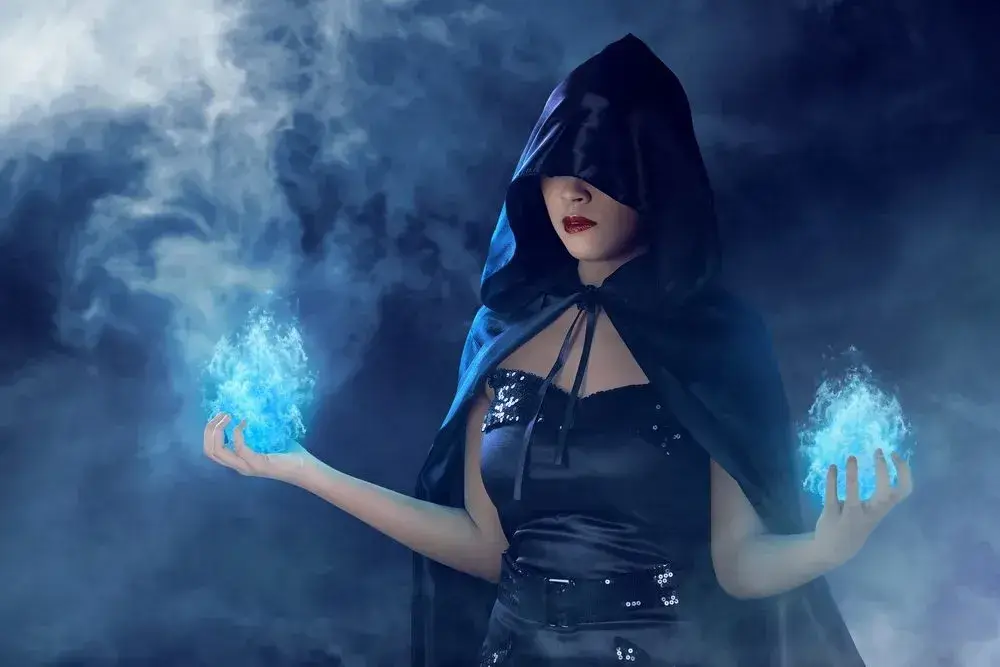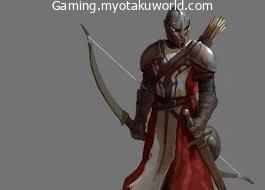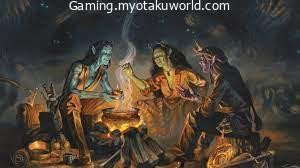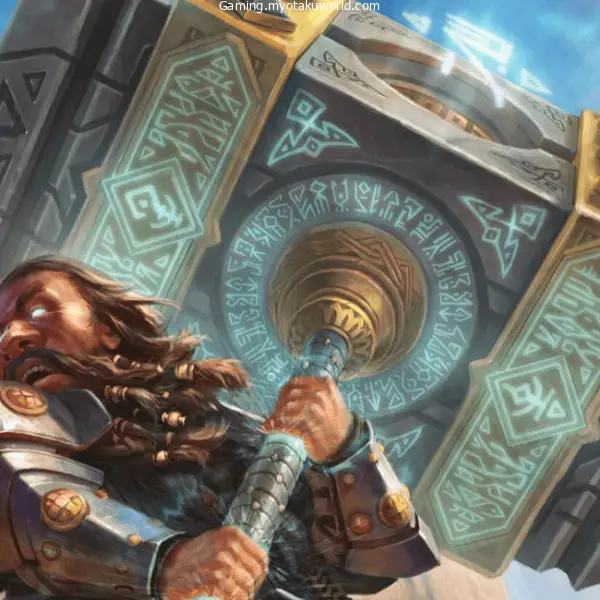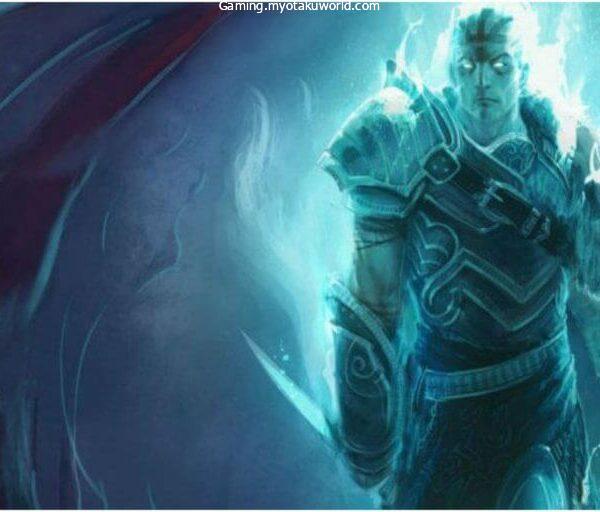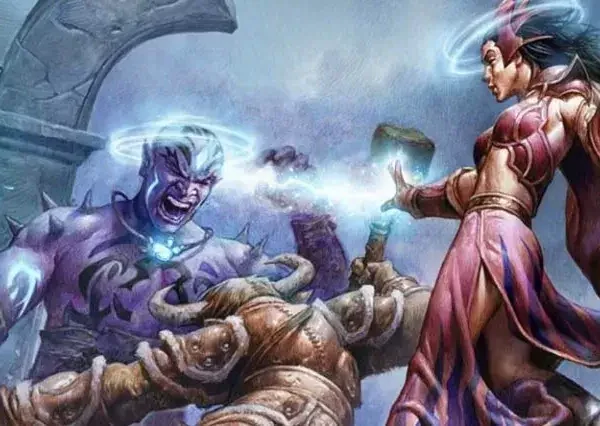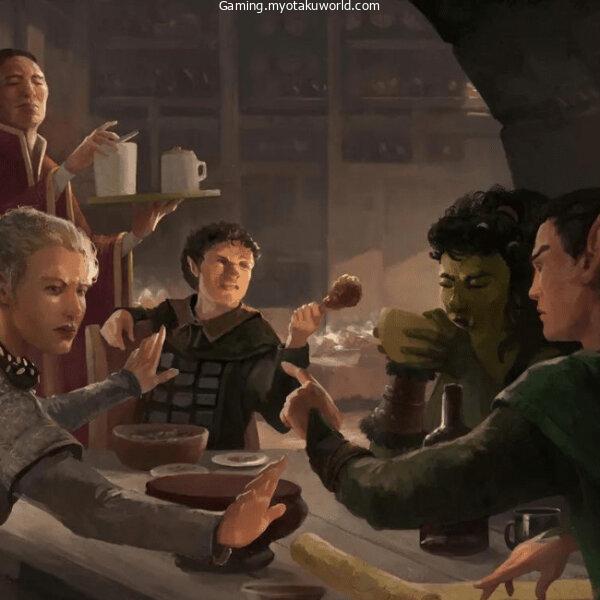There are many spells available in the world of D&D. Not to mention all of the homebrew content.
Most spells do not last more than a couple of rounds. Some spells can even hit multiple targets. Witch Bolt is one such spell that can do a lot for the battlefield.
How do you use the witch bolt spell?
When should it be used How can you make it more useful when the battle heats?
Our Witch Bolt 5e guide will show you how to do it all.

What is the Witch Bolt?
Here are the stats for the Witch Bolt, as presented in the Player’s Handbook.
- 1st Level Evocation
- Casting time: 1 Action
- Range: 30 feet
- Classes: Sorcerer, Warlock, Wizard
- Components: V, S, and M (a twig taken from a tree struck by lightning).
- Duration: Concentration up to 1 minute
A beam of blue energy, crackling and bright, is sent out towards any creature that is within your range. It forms a sustained lightning arc between you, the target, and the creature. You can use a ranged spell against this creature.
A hit causes the target to take 1d12 lightning damage. On each of your turns, for the duration, your action can be used to automatically deal 1d12 lightning to the target.
If you use your action to perform any other actions, the spell ends. The spell ends if you use your action to do anything else.
Higher levels. Cast this spell with a spell slot at 2nd or higher level. The initial damage is increased by 1d12 for every slot level above 1.
Let’s take a look at this spell. It is a 1st-level evocation spell that can be used by either a sorcerer, wizard, or warlock.
It can travel up to 30 feet. There is a vocal, somatic and material component, which we’ll get to later. If the concentration is not broken, it can also be used to create a concentration spell.
It lasts 1 minute or 10 rounds.
A beam of blue energy is directed towards any creature within its range. The lightning then arcs between the target and you.
Imagine Star Wars’ force lightning. Make a ranged attack to deal 1d12 lightning damage if it hits your target.
You can now use an action for each turn (up to 10 turns) to send more energy down an arc and to zap the target again with 1d12 lightning damage.
The spell ends if you do anything other than move or send energy down the arc. The spell also ends when the target moves beyond 30 feet or is completely covered.
The initial 1d12 damage increases by one point for every spell slot if you cast the spell using a higher slot.
You must note that this is the initial damage and not the 1d12 cumulative damage. It doesn’t matter what, it will always be 1d12.
Using Witch Bolt-In Combat
If you use this level 1 spell correctly, it can be quite powerful and amazing. The witch bolt ties you and your target together with an energy lance.
You can also deal 1d12 lightning damages if you make a ranged attack roll. You can continue sending the 1d12 down until your target is dead, or you take another action.
You could do up to 1d12 damage if you use the 1d12 when casting Witch Bolt. This is a huge amount of damage that can easily turn any enemy to ash.
If they aren’t killed, they will be enough to cause enough damage for others to finish them off.
This can be used on larger enemies who are already pinned down with your heavy hitters.
They won’t move too much and you can continue sending damage down the lance as long as you wish. Potential casters should be aware of the drawbacks of this spell.
The Downsides of Witch Bolt
First, make a ranged attack against your enemy to determine if it hits the target. If the spell fails to hit the enemy’s high AC, then you have burned the first-level slot.
Even if you tie your enemy with your first strike, there are many other ways that the spell can end. The spell will end if the enemy moves further than 30 feet from you, or into full coverage.
Your action cannot be used to do any other than send 1d12 points of damage towards the enemy.
You can move as long as the enemy is within 30ft of you. However, you cannot attack, cast another magic, assist, dash or do any other actions.
You have effectively tied your target and yourself together for the duration.
The initial damage increases if the spell is upcast, but the damage over time is at 1d12. This doesn’t mean that the spell is useless.
However, every bit of damage can be done, even against lightning-resistant foes. But you have probably better options if you are higher level.
Although it’s not a terrible spell and has a great damage output, its limitations make it a bit heavy. Witch Bolt is still a great spell for the early game.
Keeping Enemies Still
You will have to maintain your distance from your enemies so they don’t move 30 feet beyond your reach.
The perfect tag-team spell is using the spell “Hold Person” to paralyze a target for a maximum of one minute.
Although a hold person works only on humanoids, enough monsters can be used to make it work 80% of the time.
Your fighter can also knock your enemy prone. However, they will need to use only half of their movement to get up.
This can be enough to slow them down and allow you to return within range.
It can be difficult to keep enemies still if your tanks are charging into battle and the large monster is occupied. But it can work.
Can you move while casting a witch bolt?
This one is a little confusing because Witch Bolt’s rules state that the spell ends when you use your action for anything else.
In most cases, actions such as swinging your sword to strike someone or drinking a potion can cost actions. But what about bonuses actions, reactions, and movement?
This would depend on your DM and the rules of their house, but most players’ reactions are not considered actions.
Uncanny dodge is a way to avoid an attack or a melee attack that offers you the chance to respond to other triggers.
Bonus actions can be considered bonus actions, but they are not counted as actions.
If you use both of your actions to dash, movement doesn’t count for an action. You can still move, as long as your target is within 30 feet, and you’re fine. Any other action will end the spell.
Homebrew Witch Bolt
Witch Bolt is a powerful spell that has some limitations. Homebrew is a popular choice for players and DMs.
This allows them to create spells that make sense in their worlds, match with archetypes better, or simply have more fun.
Witch Bolt homebrew focuses primarily on the fact you are connected to your target via beam energy.
Instead of having the target move away from the spell and immediately break it, some DM’s will give their enemy a reason for fighting.
They may need to perform strength checks against the caster’s wisdom save or they might have to do constitution checks while fighting in a mental tug-of-war.
Even players can cast the spell into the water to shock any enemy nearby and cause environmental damage.
Some DM’s draw a physical battlefield map from which the caster can target their target. Anyone who touches that line takes 1d12 lightning damage from the Witch Bolt.
This can make fighting more difficult, especially indoors where there is not much room.
If your spellcaster has to consider the maneuverability of your party, it can make repeat dungeon crawls easier.
This can lead to some interesting team-ups and tactics as you plan your attack in each room.
Witch Bolt 5e: FAQs
What enemies are at Risk from Lightning?
You might throw the Witch Bolt at the most formidable enemy and hope that they aren’t lightning resistant. However, it is a good idea to research before you do this. According to the Monster Manuals, only 35 enemies are resistant to lightning and 10 are immune.
Lightning damage is not an issue for any monsters. You will be fine unless you are fighting a Djinni or Behir, Ochre Jelly. Lightning damage is not an issue for any of the enemies listed. Many of these enemies are high CR and extremely special. It’s unlikely that you will stumble upon a Black Pudding nest, Bronze Dragon Lair, or other unusual encounters during your random encounters for the day.
You might encounter resistance from certain foes but your Witch’s Bolt will do the majority of the damage. Your DM may also add third-party or homebrew creatures that are susceptible to lightning. In that case, you will want them to be lit up!
How do I roleplay Witches Bolt?
You could treat it like force lightning, which emits blue beams of light that become more severe as you add more energy to it. It all depends on how your caster is portrayed. A wizard might, for example, worship the god of death and throw decaying energy at the target to cause it to wither or die.
A warlock might call upon their patron to color lightning with the color they worship, adding sounds and other effects to freak out the target. The attack could be done one-handed initially, but the caster may add more power to the mix.
It’s not just cool spell damage, but it’s also a cool spell duration. Have fun with it! It’s not something you will use in the later game, with all the other options.
Should I save Witch’s Bolt for Big Fights?
It’s amazing how spellcasters can get through fights using only luck and cantrips until the time comes for the long rest. It is possible to do this, but you should make sure to use your spell slots. Otherwise, they will just sit there.
Witch’s Bolt is a powerful weapon that you can use to fight the tougher bruisers your DM gives you. You and your party can benefit from large damage combined with fighters or spells that keep creatures in range.
You don’t want your party to be fighting with the large gnoll boss or mimic at the end. If it works, the Witch’s Bolt spell can help even out the odds. Although it’s not a guarantee, it can help you win combat and allow you to take a rest.
Is Lightning Damage Good?
Lightning damage is not one of the most common types of damage, but it is done by the Witch Bolt. It is a good damage idea to have in your aresnel because there aren’t many creatures that can’t be hurt by it. There are only a few creatures that can’t be hurt by lightning, like flesh golems and bronze dragons. If you usually use firebolt but come across a creature that can’t be hurt by fire, witch bolt is a good backup.
What Does Witch Bolt Look Like When Cast?
The spell description doesn’t say much beyond the fact that Witch Bolt connects you to your target with a beam of crackling blue energy. As a player, I like to think of the Witch Bolt spell as a chain of blue electricity that goes from my hand (or spellcasting focus) and wraps around my target’s torso.
